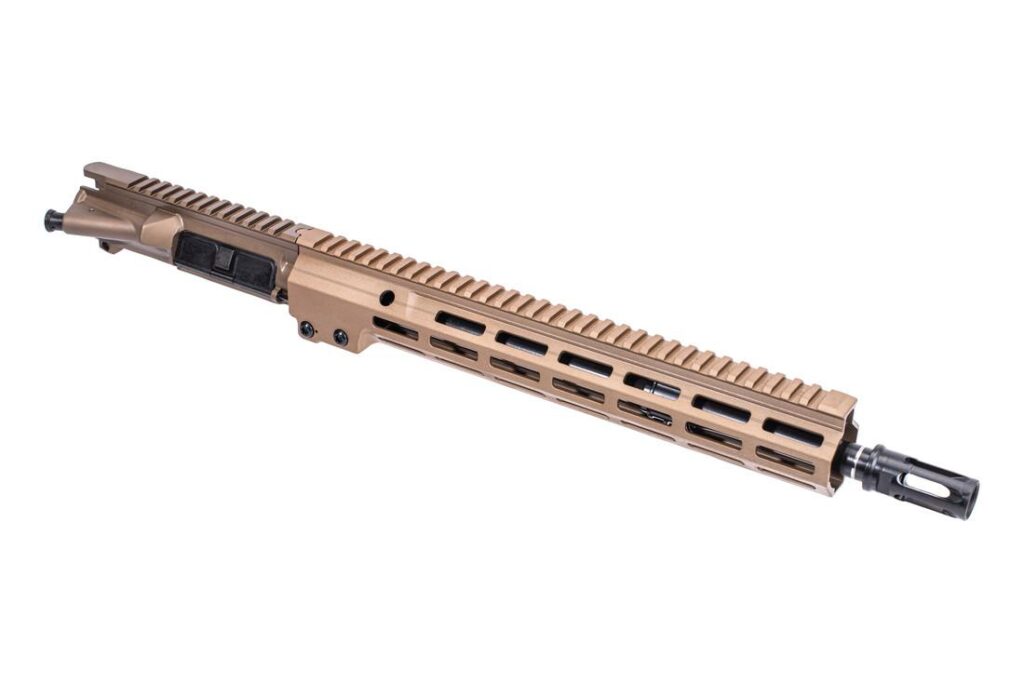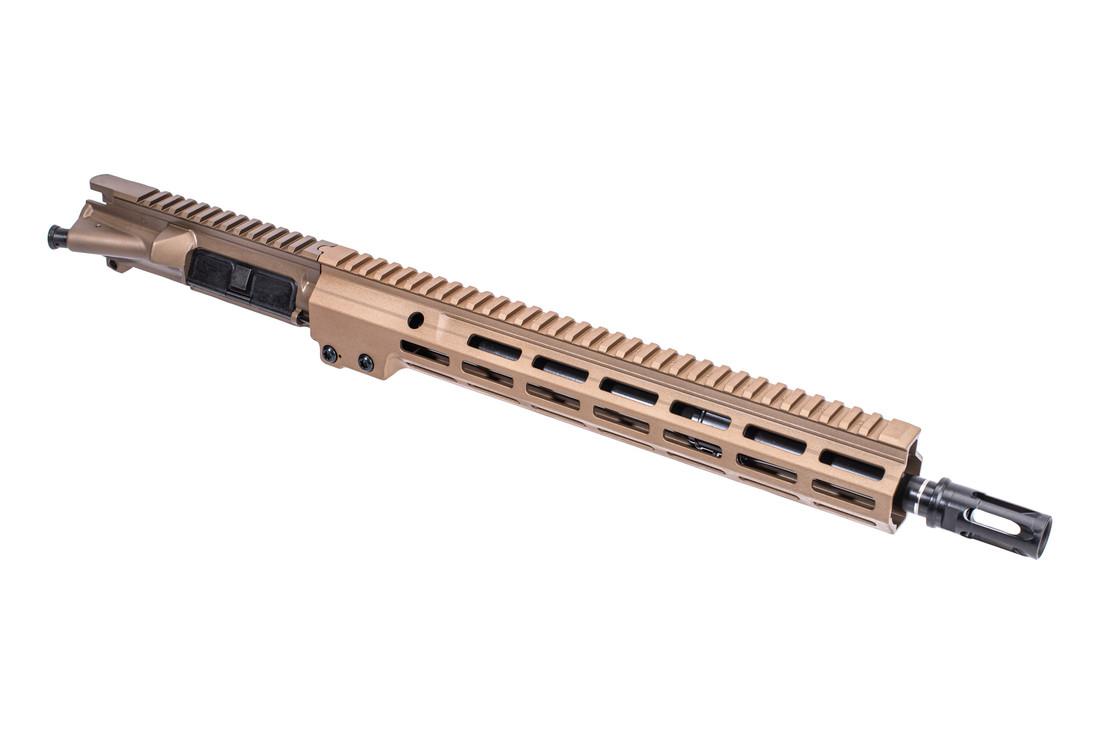
Unleashing the Fury: A Deep Dive into the 5.56 Cartridge Revolution
The 5.56x45mm NATO cartridge has become synonymous with modern military rifles, but its story is far more nuanced than a simple adoption. Often referred to simply as the “5.56”, its evolution, performance characteristics, and ongoing debates surrounding its effectiveness continue to fuel discussions among firearms enthusiasts, military strategists, and hunters alike. This isn’t just about a bullet; it’s about a paradigm shift in battlefield tactics and the ongoing quest for the ideal balance of power, accuracy, and portability in small arms. This comprehensive guide will explore the 5.56 cartridge’s past, present, and future, providing insights you won’t find anywhere else.
The Genesis of the 5.56: From Concept to Combat
The development of the 5.56 cartridge was driven by a desire to create a lighter, faster-firing alternative to the 7.62x51mm NATO round, which was the standard at the time. The 7.62 was powerful, but its weight and recoil made it difficult to control in fully automatic fire, limiting its effectiveness in close-quarters combat. Early experiments focused on smaller caliber, high-velocity projectiles, with the goal of achieving comparable terminal performance while significantly reducing weight and recoil. The initial designs faced skepticism, however, proponents argued that shot placement and volume of fire could compensate for the reduced individual impact of the smaller round. The development of the AR-15 rifle, designed around the 5.56 cartridge, was a pivotal moment, offering a lightweight and accurate platform that could deliver a high volume of fire.
Early Adoption and Initial Challenges
The 5.56 cartridge and the AR-15 rifle were quickly adopted by the United States military during the Vietnam War. The M16 rifle, the military version of the AR-15, offered soldiers a significant advantage in terms of weight and ammunition capacity compared to the older M14 rifle, which fired the 7.62 cartridge. However, the early versions of the M16 were plagued by reliability issues, largely due to inadequate maintenance and the use of inappropriate ammunition. These problems led to widespread criticism of the 5.56 cartridge and the M16 rifle, with many questioning their effectiveness in combat. Despite these initial setbacks, the 5.56 cartridge and the M16 rifle were eventually refined and improved, becoming the standard issue for the United States military and many other armed forces around the world.
Understanding the Ballistics and Performance of the 5.56
The 5.56 cartridge is known for its high velocity and relatively flat trajectory, making it effective at longer ranges. However, its small size and light weight also mean that it is more susceptible to wind drift and other environmental factors. The terminal ballistics of the 5.56 cartridge, or how it behaves upon impact with a target, have been the subject of much debate. Some argue that the 5.56 cartridge is not powerful enough to reliably incapacitate an enemy combatant, while others maintain that its high velocity and fragmentation characteristics can be highly effective. The actual performance of the 5.56 cartridge depends on a variety of factors, including the specific ammunition used, the barrel length of the firearm, and the distance to the target. Different bullet weights, designs, and construction methods can significantly affect the cartridge’s performance, making it essential to choose the right ammunition for the intended application.
Variations in Ammunition and Their Impact
Numerous variations of 5.56 ammunition exist, each designed for specific purposes. Full metal jacket (FMJ) rounds are commonly used for target practice and general-purpose shooting, while hollow point rounds are often preferred for self-defense due to their increased expansion and stopping power. Armor-piercing rounds are designed to penetrate hardened targets, such as body armor, while tracer rounds are used to visually indicate the path of the bullet. The choice of ammunition can have a significant impact on the performance of the 5.56 cartridge, and it is essential to understand the characteristics of each type of ammunition before using it. For example, some ammunition may be more accurate than others, while some may be more prone to fragmentation. Understanding these differences can help shooters make informed decisions about which ammunition is best suited for their needs.
The Rise of the .223 Wylde Chamber: A Versatile Solution
The .223 Wylde chamber is a hybrid chamber design that allows firearms to safely and accurately fire both 5.56 NATO and .223 Remington ammunition. This chamber design has become increasingly popular in recent years, as it offers shooters greater versatility and flexibility. The .223 Remington cartridge is a civilian version of the 5.56 NATO cartridge, and while the two cartridges are similar in size and shape, they have slightly different dimensions and pressure specifications. Firing 5.56 NATO ammunition in a firearm chambered for .223 Remington can result in excessive pressure, which can damage the firearm or even cause it to explode. The .223 Wylde chamber addresses this issue by providing a slightly larger chamber that can safely accommodate both types of ammunition. This makes it a popular choice for shooters who want to be able to use a wide range of ammunition without having to worry about damaging their firearm.
Exploring the Modern Sporting Rifle: The AR-15 and Its Variants
The AR-15 rifle has become synonymous with the 5.56 cartridge, and it is one of the most popular firearms in the United States. The AR-15 is a lightweight, modular rifle that can be easily customized with a wide range of accessories, such as scopes, lights, and foregrips. It is commonly used for target shooting, hunting, and self-defense. The AR-15 is also the basis for many other firearms, including the M4 carbine, which is the standard issue rifle for the United States military. The AR-15 and its variants have been the subject of much debate, with some arguing that they are too dangerous for civilian ownership. However, proponents of the AR-15 argue that it is a versatile and accurate firearm that is well-suited for a variety of purposes. The AR-15’s modular design, ease of use, and readily available parts have contributed to its widespread popularity.
The 5.56 in Law Enforcement and Self-Defense Scenarios
The 5.56 cartridge is also widely used by law enforcement agencies around the world. Its accuracy, range, and stopping power make it an effective tool for engaging threats at a distance. Many police departments issue AR-15 rifles chambered in 5.56 to their officers, particularly those assigned to SWAT teams or other specialized units. In self-defense scenarios, the 5.56 cartridge can be a viable option for those who are comfortable handling a rifle. However, it is important to consider the potential for overpenetration, which can pose a risk to bystanders. Choosing the right ammunition, such as hollow point rounds, can help to mitigate this risk. Responsible gun ownership and proper training are essential for anyone who chooses to use a 5.56 rifle for self-defense.
Advantages of the 5.56 Cartridge
- Lightweight and manageable recoil: Allows for faster follow-up shots and increased control, particularly in rapid-fire scenarios.
- High velocity and flat trajectory: Extends the effective range and makes it easier to hit targets at longer distances.
- Versatile: Can be used in a wide range of firearms, from pistols to rifles, and is suitable for a variety of applications, from target shooting to hunting to self-defense.
- Readily available and affordable: Makes it a cost-effective option for training and practice.
- Modular platform: The AR-15 platform allows for extensive customization with various accessories and modifications.
Drawbacks and Limitations of the 5.56
- Terminal ballistics concerns: Some argue that the 5.56 cartridge lacks sufficient stopping power, particularly at longer ranges.
- Susceptibility to wind drift: Its light weight makes it more vulnerable to wind drift than heavier cartridges.
- Overpenetration risk: In self-defense scenarios, the 5.56 cartridge can overpenetrate, posing a risk to bystanders.
- Ammunition sensitivity: Performance can vary significantly depending on the specific ammunition used.
Who is the 5.56 Best Suited For?
The 5.56 cartridge is well-suited for a wide range of shooters, including:
- Military personnel and law enforcement officers: Its accuracy, range, and stopping power make it an effective tool for engaging threats in combat or law enforcement situations.
- Target shooters and competitive shooters: Its flat trajectory and manageable recoil make it a popular choice for target shooting and competitive shooting events.
- Hunters: While not ideal for large game, the 5.56 can be used to hunt varmints and small game.
- Home defense enthusiasts: The AR-15 platform chambered in 5.56 is a popular choice for home defense due to its ease of use and modularity.
Alternatives to the 5.56 Cartridge
While the 5.56 is a popular and versatile cartridge, there are several alternatives that may be better suited for specific applications. The 7.62x39mm cartridge, for example, is a popular choice for hunting larger game, while the 9mm cartridge is a common choice for concealed carry and self-defense. The .300 Blackout cartridge is another alternative that offers improved performance in short-barreled rifles.
Expert Verdict: The Enduring Legacy of the 5.56
The 5.56 cartridge has had a profound impact on the world of firearms, and it remains one of the most popular and widely used cartridges in the world. While it has its limitations, its advantages in terms of weight, recoil, and accuracy make it a valuable tool for a wide range of applications. Whether you are a military professional, a law enforcement officer, a target shooter, or a home defense enthusiast, the 5.56 cartridge is worth considering. Its enduring legacy is a testament to its versatility and effectiveness, securing its place in firearms history.
The Future of Small Arms: Ongoing Development and Refinement
The 5.56 cartridge has undergone continuous development and refinement since its introduction, and this trend is likely to continue in the future. New bullet designs, propellant formulations, and firearm technologies are constantly being developed, with the goal of improving the performance of the 5.56 cartridge and addressing its limitations. Recent studies suggest that advancements in bullet technology are significantly improving the terminal ballistics of the 5.56, making it more effective at longer ranges. The future of the 5.56 cartridge is bright, and it is likely to remain a dominant force in the world of firearms for many years to come.
Share your thoughts and experiences with the 5.56 cartridge in the comments below. Your insights can help others make informed decisions about their firearms and ammunition choices.

